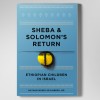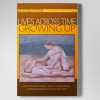Discussion
We discuss this case in two parts. First how prior to treatment, this boy constructed an elaborate fantasy world of the undead (and saw himself as such) that helped maintain his psychic equilibrium, but also both kept him from becoming human, and “made” him do things to humans that he at times regretted (and at times, didn’t regret), states of mind closer to pre-ruth or ruthlessness (Winnicott, 1970; Giovacchini, 2000). Second, we raise thoughts about how this boy’s developmental model of the undead may cast some light on the meaning of contemporary American interest, even preoccupation with the undead.
D.’s model speaks eloquently for itself: there are various levels of undead, he explained, from the most primitive, Zombie, to a higher level of Vampire, to the almost human, Werewolf. His explanation of the inner dynamics and motivations of these characters can be understood in libidinal, object relational and dynamic terms (Abraham, 1925; Henderson 1976; Olesker, 2007).
Libidinally, all three subhuman undeads are in the oral aggressive mode. Even the vampire who sucks blood (oral incorporative) must first attack with his canines (oral aggressive) (Abraham, 1925). More so, in object relations terms, they “depend” on the living; in a perversion of the infant state, they consume the living, a stance that brings us closer to Klein’s account of infant phantasies of destroying or consuming the breast in the Paranoid-Schizoid position (Klein, 1975). Matters become more complex dynamically and in object relational terms when we differentiate amonst the developmental hierarchy of the undead. First, unlike the undead Zombies and Vampires – Zombies having no volition, nor concern or awareness off what they are doing; Vampires having both volition and awareness, but no remorse – D.’s almost paralyzing ritualistic symptoms showed the price he paid for living in his undead internal world. We can understand the Zombies as being developmentally closer to the pre-ruth stage described by Winnicott (1970) of the younger infant who consumes greedily, even apparently aggressively, but without the infant having a sense of ruthlessness. Second, in contrast, the Vampire shows ruthlessness, certainly in the way that D. portrayed it. Third, ironically, even hopefully, while D. assigned (projected into the analyst) the role of Werewolf, the subhuman with remorse, to the analyst, in later sessions, D. said that each year at his birthday he became either a good or bad Werewolf, indicating that he had this internal representation (closer to human, more depressive position) and no longer projected this upon the analyst only. Note that the Werewolf’s remorse has a quality of Klein’s concept of guilt; perhaps restoring “life” to my babies was his version of reparation at this point in treatment (Klein, 1975).
D.’s concept of being undead – overtly, apparently alive, but not – expresses his sense of being dead inside, a schizoidal quality, even as he appeared alive on the outside (Searles, 1975; Flarsheim, 1975; Giovacchini, 2000). His account of he and his baby wearing body masks to look as if they were human, might be his way of describing a form of false self, an apparent aliveness that covers-over the core deadness (Winnicott, 1970; Giovacchini, 2000). We do not suggest that the core deadness was a form of his true self. Rather, the manic activity and the core deadness were onion-like layers of false self protecting a vulnerable true self (Winnicott, 1970; Giovacchini, 2000). Even his overt presenting symptoms – the driven sports activities, his incessant dribbling up and down stairs until past midnight, while appearing phenomenologically to be a hypomanic defense, proved to be closer to a sense of combating the deadness within. And his compulsive presenting behaviors, which resolved in the first six months of treatment, we might consider magical acts to protect himself (or others) from aggressive wishes and fears, including annihilation anxiety (Sandler and Joffe, 1965). Behind all these presenting symptoms and as revealed by the Vampire/Werewolf and other play was a grim sense of terror, a feeling state at the extreme end of the anxiety spectrum (Giovacchini, 2000).
We can speculate about why this boy began this play assigning himself as the Vampire and the analyst as Werewolf
. We have both historical developmental information as well as his affective expressions on presentation. First, we know from the parents that mother felt withdrawn after his birth, disappointed that this was not a girl and knowing she wouldn’t have further pregnancies. She describes a matter-of-fact, mechanical method of feeding and infant care, what we might consider a kind of deadness. And, when this boy presented to treatment, his facial expressions (unlike his frenetic body movements and tics) in particular were wooden, limited, tight. Even as his play, gesture and body movement began to thaw and become more excited, at first this was with restricted facial expression. If we understand that an infant sees himself reflected in his mother’s gaze (literally, reflected in the pupils; but also emotionally in her responses), then we can wonder if this boy saw a dead or empty reflection in her face. More specifically, he may have developed a vampire introject: someone who cannot see himself reflected (in a mirror for Vampires; in the facial liveliness of others for this boy) (Flarsheim, personal communication). But, we are only speculating here on his choice of Vampireness at the beginning. It was significant, we discussed later in treatment, that he assigned the analyst a role of the Werewolf: someone higher on the developmental axis — occasionally almost human, but given (this boy feared) to homicidal rages and subsequent remorse. This boy had to “survive” the analyst werewolf, who did not retaliate in response to the boy’s provocations.
We can couch this boy’s mental construct (undead fantasies) and his work in treatment in terms of shifting from closed to open systems (Novick and Novick, 2001, 2004). The undead fantasy world (among other mental constructs) was a “magical omnipotent defense against helpless panic; his psychoanalytic work helped him move from a “’closed system’ hostile omnipotent to an ‘open system’ competent mode of self regulation” (Novick, personal communication). Further, in D’s case at least, omnipotence is a magical hostile defense against trauma, rather than a normal phase of development. This brings his mental construct closer to Winnicott’s (1970) distinction between delusion versus illusion.
But, this hierarchy of undead transferences has technical implications for treatment. In the more primitive position, the Zombie transference, we have a patient who feels dead within and is ravishingly hungry. I say “is,” because from D.’s perspective we cannot say the Zombie feels hungry: there is not subjective feeling. In a sense, this is different than Winnicott’s normative stance of pre-ruth of the healthy infant: the healthy infant begins to experience hunger even as it is satisfied: the Zombie must eat the living incessantly without evidence of either felt hunger, nor satiation. This is an example of Winnicott’s distinction between unintegration (the hunger-feeling infant) versus dis-integration (the unfeeling Zombie). This boy’s initial presentation – mask-faced, emotionless, even as he expressed emotion in his movements – is consistent with his experiencing himself as a Zombie. His bizarre play-house stories of a family’s non-chalant consumption of their Superbaby strengthen this picture.
The Vampire transference is more advanced and complex, for the Vampire cannot see his own reflection. The Vampire transference would include the sense that the patient did not feel himself or herself reflected in the mother’s gaze (literally, as we know that the mother’s pupils will reflect the infant.) A psychically dead mother, an unresponsive, preoccupied, perhaps depressed mother cannot reflect the liveliness of the baby. So too, in the transference, the patient will expect no reflection and increases his provocative attacks in order to see whether there is retaliation and if the analyst can survive these attacks. Recall that the Vampire offers us eternal undeadness if we succumb to its attacks. A therapeutic stance includes not retaliating and also surviving (Winnicott, 1971).
The Werewolf for this boy was projected into the analyst, but could also represent as a transference. There is both hopefulness to the Werewolf – he feels human much of the time, but affected by the moon (like the mother’s menses, we might speculate), he is transformed against his will. And will he tries to have, unlike the Zombie or Vampire who have no volition. Technically, with a werewolf transference, we not only need survive the attacks, but recognize the sense of remorse afterwards and the wish to become human (again). That is, this boy’s thoughtful, developmental schema on the undead offers us technical suggestions on how to handle these in the transference. In his treatment, of course, he traversed all three levels of undead; one can have patients who present with only one of these as the prolix literature on vampires, zombies and werewolves cited above demonstrate.
D.’s pretreatment inner constellation, his compromise formation of undead, may not only be his personal attempt to resolve inner difficulties, but also contribute to understanding a societal enigma (Erikson,1968): why have we constructed these worlds of subhumans and why do we revive our preoccupation with them in certain eras such as the present. What might we understand about contemporary society’s (and particularly contemporary youths’) burgeoning interest in the undead, as indicated by the proliferation of books and movies about Vampires, let alone the long-standing matrix of interest in Zombies and Werewolves in Western Culture (Isherwood, 2011)? That is, we can extend Erikson concept that some talented individuals may experience and (partially) resolve personal intrapsychic conflicts that they share with society in such a way that it casts light on that society, as Erikson demonstrated with Martin Luther, Ghandi and Sigmund Freud (Wallerstein and Goldberger, 1998). We suggest that D’s unique contribution here is at least twofold. First, that the undead have a developmental hierarchy amongst each other, along axes of volition, guilt and ruthlessness. Second, and perhaps too obviously, all undead are orally dependent upon the living: they can’t live without them (and, frighteningly for D. at least, the living can’t live with them). Minimally, we can pose questions. Does the recent rise of blood-sucking flicks speak of a sense of internal deadness in our youth, a deadness that can be temporarily slated by the thirst for living blood? Does it also reflect their sense that they are vividly, grimly dependent upon (while aggressively destructive towards) the living? Does it reflect a sense of yearning (such as D.’s) to be transformed into feeling alive? From society’s perspective, are we experiencing our infants, our youth as consuming us, as never being able to mature into autonomous beings?
At least by posing these questions, we can listen more acutely, more sensitively to contemporary youth. In this way, we can confirm whether these feelings are present, understand what we may need to do societally, if this is true. More importantly, we can help them devise routes to meaningfully alive inner selves that don’t depend on orally aggressive, incorporative, cannibalistic dependence on those living around them.
References:
Karl Abraham The Influence of Oral Erotism on Character-Formation1
(1925). International Journal of Psycho-Analysis, 6: 247-258
Anthony, E. J. (1977). Nonverbal and Verbal Systems of Communication: A Study in Complementarity. PSC 32: 307-325.
Erikson, E. (1968) Identity Youth and Crisis. Norton.
Flarsheim, A. (1975). Commentary on Searles’ “The Patient as Therapist to his Analyst.” In: P. Giovacchini. Tactics and Techniques. Vol. II Aranson.
Giovacchini, P. 2000. The Impact of Narcissism. NJ: Aranson. p. 152-5
Green, A. (1983). Narcissisme de vie, Narcissisme de mort. Paris: Minuit.
Henderson JD (1976). Exorcism, possession, and the Dracula cult: A synopsis of object-relations psychology. Bull. Mennin. Clinic. 40: 603-28.
Isherwood, C. (2011), “Bloody, Bloody, Revival, Revival,” The New York Times, January 6, 2011, p. C1.
Klein, M. 1975 Envy and Gratitude and Other Works. London: Hogarth.
Kayton, L. 1972: The Relationship of the Vampire Legend to Schizophrenia. Pp. 303-314.. Psychoanal Q., 43:157.
Kris, E. (1956). On Some Vicissitudes of Insight in Psycho-Analysis. Int. J. Psycho-Anal., 37:445-455.
LaPlanche J. and Pontalis, J. 1973. The Language of Psychoanalysis. London: Hogarth.
Novick, J and Novick, KK (2001). Two systems of self-regulation: psychoanalytic approaches to the treatment of children and adolescents. J. Psa. Soc. Work 8: 95-122
Novick, J and Novick, KK (2004). The superego and the two-system model. Psa. Inquiry 24: 232-256.
Roheim, G. (1953). Fairy Tale and Dream. Psychoanal. Study Child. 8: 394-403.
Sandler, J. and Joffe, W. G. (1965). Notes on Obsessional Manifestations in Children. Psychoanal. Study Child 20:425-438
Searles, H. (1975) The Patient as Therapist to his Analyst. In: P. Giovacchini, Ed. Tactics and Techniques, Vol. II. NJ: Aranson p. 95-151.
Szajnberg, N. (1993). Recovery of a Repressed Traumatic Memory and Subsequent Representational Shift in an Adolescent’s Analysis. JAPA 41:3, 711-27.
Terr, L. (1990). Unchained Memories. NY: Basic.
Wallerstein, R. and Goldberger, L. (1998) Ideas and Identities: The Life and Work of Erik Erikson. Madison, Ct.: IUP.
Winnicott, D. W. (1970). The Maturational Processes and the Facilitating Environment. NY: IUP.
Winnicott, D. W. (1971). Therapeutic Consultations. NY: Basic.



